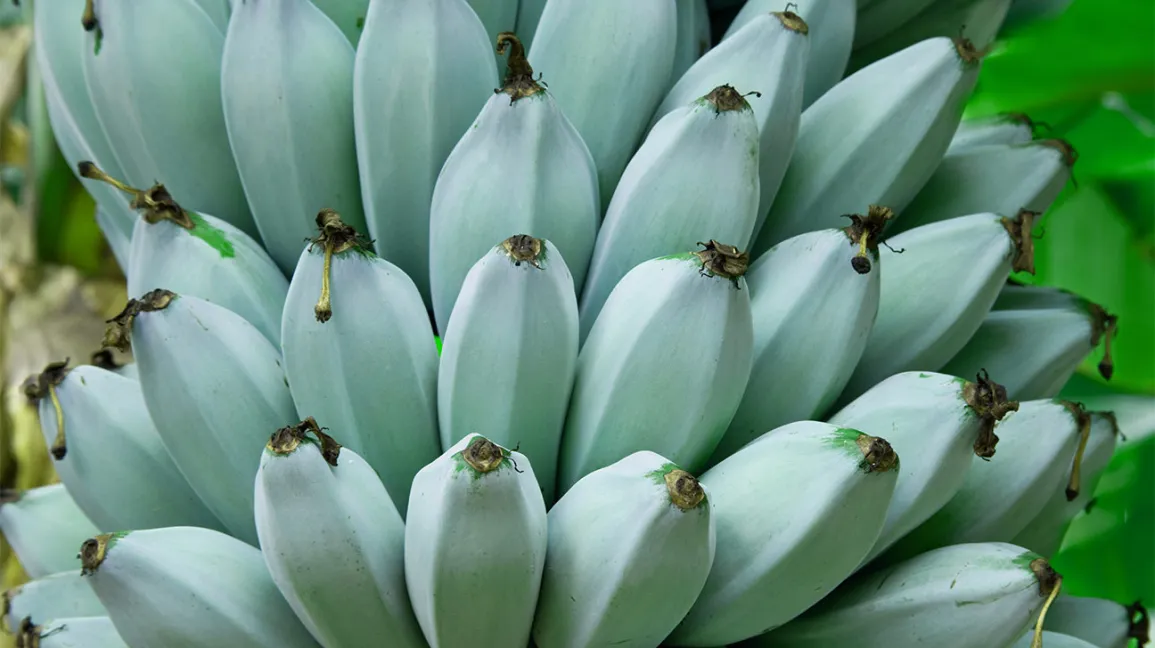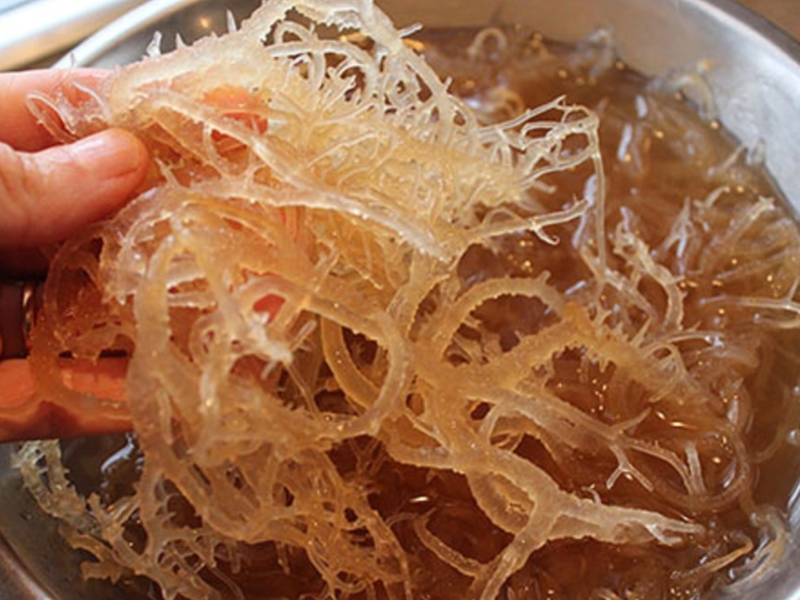The banana type known as Blue Java is remarkably comparable to vanilla ice cream in terms of flavor and consistency. In addition, it goes by the names “ice cream banana” in Hawaii, “Cenizo” in Central America, and “Hawaiian banana” in Fiji.
When unripe, it has an azure blue peel and a delicious scent. These bananas are greenish or pale yellow when ripe, and they have a whitish yellow inside. It is a South East Asian variety that can continue to thrive in temperatures as low as 20F/-7C, unlike other varieties of banana.
Since bananas are high in energy but low in fat, 100 grams of banana have 89 calories, 22.8 grams of carbs, and 0.3 grams of fat. They contain a lot of potassium, which helps muscles contract properly, stimulates nerve cells, and controls heart rate.
Blue Java bananas provide a decent quantity of fiber and a number of immune-boosting antioxidants. Additionally, they are rich in protein, magnesium, copper, manganese, and vitamins B6 and C.
Due to the slow stomach emptying caused by the high pectin and resistant starch content, blood sugar levels after meals are regulated and appetite is reduced. Additionally, these fruits have a low to medium glycemic index rating (GI).
Find out more about: The Largest Study Of Its Kind Reveals A Link Between These Mental Health Issues And The Human Gut
Since the body can produce its own serotonin thanks to the high vitamin B6 content, eating these bananas greatly elevates mood. More than 75% of your RDA of vitamin B6 can be found in a smoothie or delectable banana ice cream made with a couple of Blue Java bananas.
These bananas are also rich in non-digestible fibers like cellulose, hemicellulose, and alpha-glucans, which help to maintain normal bowel function and prevent constipation.
Additionally, the resistant starch bypasses digestion and travels to the big intestine, where it feeds the good bacteria there.
The Blue Java Banana has wide, sturdy, and thick leaves like any other banana type. These leaves can be used in place of aluminum foil and parchment paper for cooking as well as for other purposes. Additionally, you can bake, boil, steam, grill, and dry these leaves.
These bananas can be used in place of ice cream or to add vanilla flavor to a variety of recipes, including smoothies, banana cakes, oatmeal cookies, pancakes, and more.
Therefore, in order to benefit from growing Blue Java bananas here and enjoy their delicious fruits, you should be aware of the following:
— It the U.S. it is suitable for growing in the USDA’s zones 9b through 11, although some farmers grow from zones 8 through 11, which are part of the hardiness zones
— If you plant a pseudostem, it takes around 9 months for the fruits to mature after the first leaves appear.
— You should frequently water the banana tree since bananas prefer mushy conditions and warm, rich soil.
— Since they also need a lot of fertilizing, you’ll need to take care of it by using an NPK fertilizer with nutrients in the proportion of 3:1:6. For a plant that is one foot tall, you should spray a cup of fertilizer around the roots once each month.
— To improve photosynthesis, you should also prune the secondary shoots surrounding each rhizome, but leave at least one shoot intact.
— Sunlight is necessary for bananas to germinate, but it is preferable for the banana tree to only be partially exposed to sunlight.



